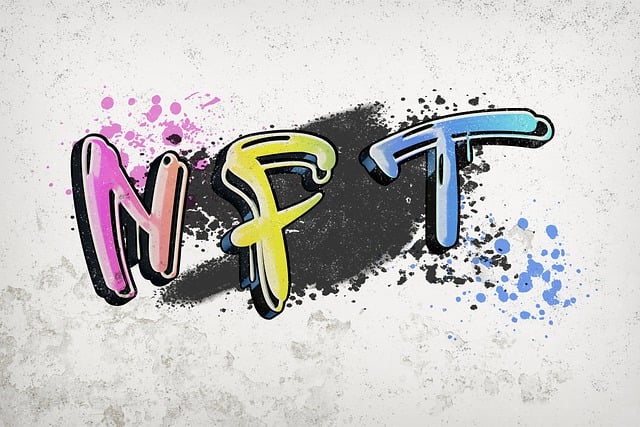Introduction
NFTs (Non-Fungible Tokens) have emerged as one of the most polarizing topics in the digital world. From multi-million-dollar art sales to viral memes and virtual real estate, NFTs have captured the imagination of creators, collectors, and investors alike. Some view them as an overhyped trend that will fade away, while others believe they are the future of digital ownership. But what exactly are NFTs, and do they have real long-term value? This blog explores the evolution, benefits, criticisms, and potential future of NFTs.
What Are NFTs?

NFTs are unique digital assets that represent ownership of a specific item or piece of content, verified using blockchain technology. Unlike cryptocurrencies such as Bitcoin or Ethereum, which are fungible (meaning one unit is interchangeable with another), NFTs are non-fungible – each token is distinct and cannot be replicated or replaced. This is what gives NFTs their value and appeal.
NFTs can represent a wide range of digital and physical items, including:
- Digital art
- Music and videos
- Virtual real estate in metaverses
- Collectibles (e.g., trading cards, virtual pets)
- Domain names
- Even tweets and memes
The Hype: Why Did NFTs Gain Popularity?
The NFT market exploded in 2021, with high-profile sales making headlines. Some major reasons for their popularity include:
- Empower Creators: Artists, musicians, and other creators can monetize their work directly, bypassing traditional intermediaries like galleries or record labels. Smart contracts enable them to earn royalties every time their NFT is resold.
- Create Scarcity in the Digital Realm: In a world where digital content can be copied infinitely, NFTs introduce scarcity and ownership, making digital items valuable and collectable.
- Foster Community and Identity: NFTs often come with perks, such as access to exclusive events, communities, or virtual spaces, creating a sense of belonging and identity for owners.
- Speculation and Investment: Many buyers treat NFTs as investment assets, hoping their value will increase over time.
However, the hype has also led to criticism. Detractors argue that the NFT market is a speculative bubble, driven by FOMO (fear of missing out) and inflated prices. Concerns about environmental impact (due to the energy-intensive nature of blockchain networks), copyright infringement, and scams have further fueled skepticism.
The Case for NFTs as the Future of Digital Ownership
While the hype may have settled, the underlying technology behind NFTs presents real-world applications beyond digital art. Here are some ways NFTs could shape the future:
- Revolutionizing Ownership and Provenance
NFTs provide a transparent and immutable record of ownership, solving long-standing issues in the art and collectibles markets. For example, artists can prove the authenticity of their work, and buyers can verify its history. This technology can extend beyond art to industries like real estate, luxury goods, and even academic credentials.
2. Empowering Creators
NFTs democratize access to creative markets. Independent artists, musicians, and writers can reach global audiences and earn a fair share of the value their work generates. This shift could disrupt traditional gatekeepers and create new economic opportunities.
- Building the Metaverse
As virtual worlds like the metaverse gain traction, NFTs will play a crucial role in defining ownership within these digital spaces. Virtual real estate, avatars, and in-game assets can all be tokenized as NFTs, creating a new economy and social structure in the digital realm.
- Interoperability and Innovation
NFTs are built on blockchain technology, which is inherently interoperable. This means that NFTs created on one platform can potentially be used or traded on another, fostering innovation and collaboration across industries.
NFTs Challenges and Criticisms
While the potential of NFTs is undeniable, several challenges must be addressed for them to achieve mainstream adoption:
- Environmental Concerns
Many NFTs are minted on the Ethereum blockchain, which currently uses a proof-of-work consensus mechanism that consumes significant energy. However, the transition to Ethereum 2.0 and the adoption of more energy-efficient blockchains could mitigate this issue.
- Market Speculation and Volatility
The NFT market has been characterized by extreme volatility and speculation. Prices can skyrocket overnight, only to crash just as quickly. This unpredictability makes it difficult for NFTs to be seen as a stable investment or store of value.
- Legal and Ethical Issues
Copyright infringement, plagiarism, and the unauthorized use of intellectual property are rampant in the NFT space. Clear regulations and ethical standards are needed to protect creators and buyers.
- Accessibility and Usability
For many, the process of buying, selling, and storing NFTs is still too complex. Improving user interfaces and educating the public will be key to broader adoption.
Conclusion
The Road Ahead: Hype or Future?
So, are NFTs just a hype, or are they the future of digital ownership? The answer lies somewhere in between. While the current frenzy may cool down, the underlying technology and principles of NFTs have the potential to create lasting change.
NFTs represent a shift in how we perceive and interact with digital assets. They challenge traditional notions of ownership, value, and creativity, offering new possibilities for creators, collectors, and investors. However, for NFTs to truly become the future of digital ownership, the industry must address its challenges, from environmental impact to market stability and ethical concerns.
As with any emerging technology, the journey will be filled with experimentation, setbacks, and breakthroughs. Whether NFTs become a cornerstone of the digital economy or a niche market will depend on how the technology evolves and how society chooses to embrace it.


